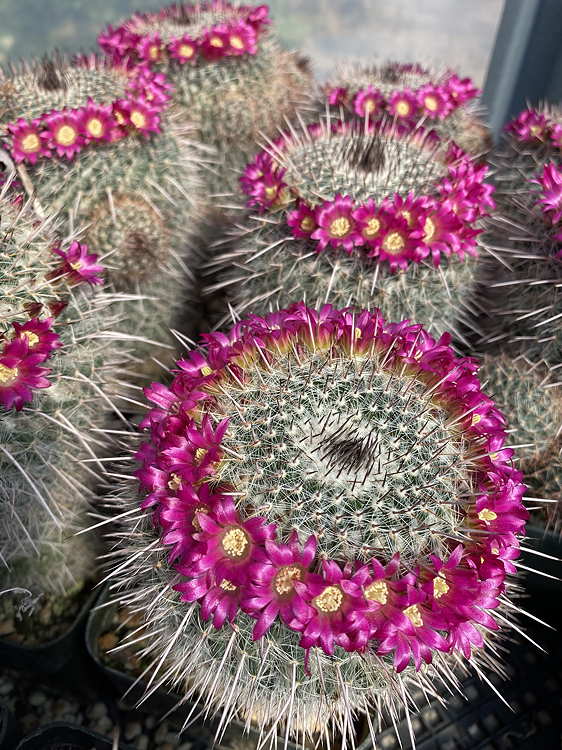Francisco Buchenau described this species in Cactaceas y Succulentas Mexicanas 11 (4): 79 – 81 (1966). He suggested that it belonged to a group including M. huahuapensis, M. mixtecensis, and M. casoi. All of those are now considered synonyms of the highly variable species M. mystax. Like some forms of M. mystax, M. varieaculeata is variable with regard to central spines. According to Pilbeam (Mammillaria, The Cactus File Handbook 6, 1999), these can number from “1-5, 4-5 in young plants, later 2-3, finally 1-2.” Further, he notes that these centrals are “4 to 12mm long , later mostly 5 to 10mm, but with odd spines to 45mm, strong needle-like, at first dark or reddish brown, later paler.” This all sounds very definitive, but given such variation, this progression is not so clear. In cultivation we find that most heads, regardless of age, will have central spines about equal in length to the 17 to 20 radials. As in some forms of M. mystax, under the right conditions, impressive, long centrals are produced in the upper areoles of some heads. It is unclear what conditions to provide to predictably create long-spined areoles, though high ultraviolet light and sufficient mineral availability may be factors. In any case, the plants offset to create impressive, densely spined mounds, not prone to blemishing, and especially spectacular when each head is crowned with a ring of cheery, bright magenta flowers. We offer rooted cuts of HBG 133882, a plant originally from the Woody Minnich collection, without precise data. However, the species is reported from the Mexican state of Puebla, south of Chilac. $12.

Published in the Cactus and Succulent Journal, Vol. 97 (2), Summer 2025